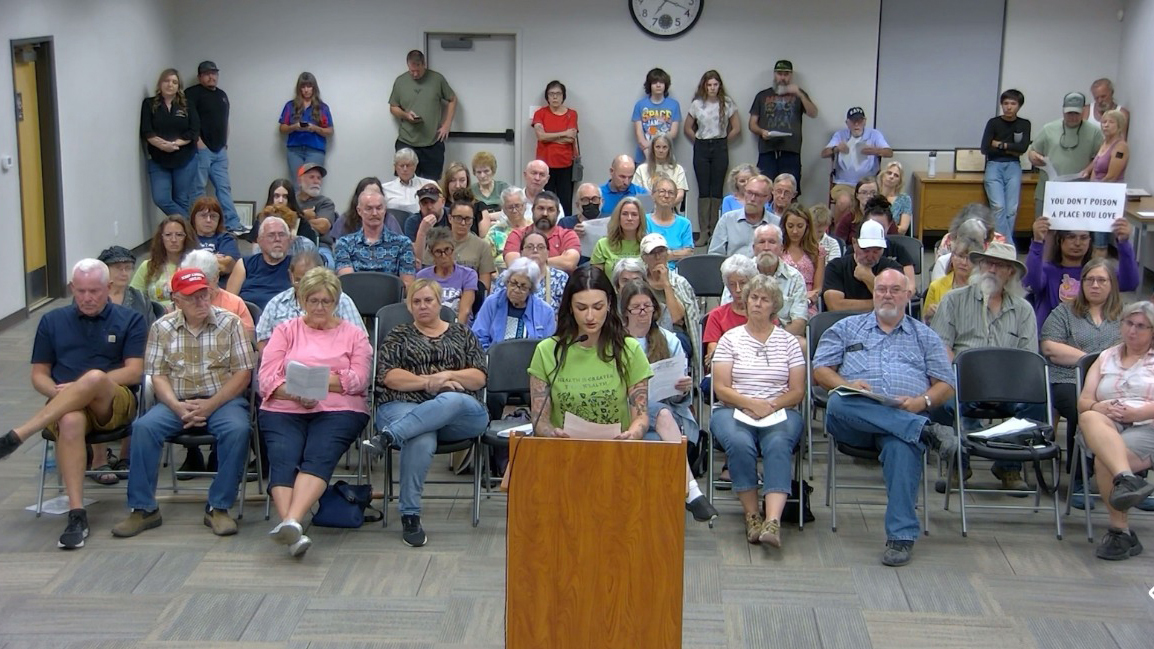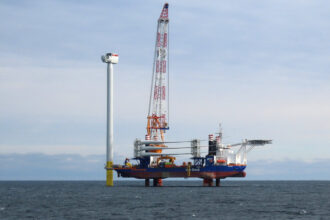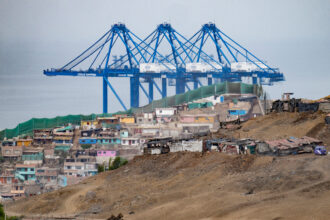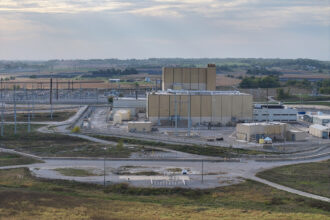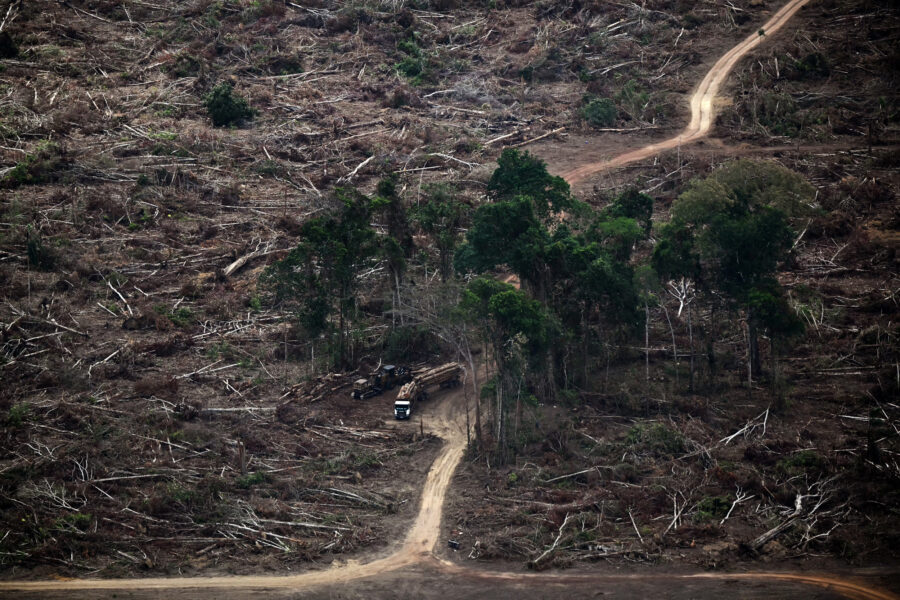On the evening of August 21, 2025, Chris Giokaris hopped on the interstate heading southeast from his hometown of Tucson, Arizona. His destination was Benson, a town of about 5,500 people located 50 miles away. The small town is known as the gateway to the San Pedro Valley, in large part for the San Pedro River that winds its way north from Mexico as one of the last undammed rivers in the Sonoran Desert.
Now, Benson residents worry their region’s environment could soon be jeopardized by plans for a 200-acre aluminum recycling plant operated by Aluminum Dynamics, Inc., a subsidiary of Steel Dynamics, Inc., one of the United States’ largest steel producers and metals recyclers. The proposed development has garnered outcry from residents concerned about the facility’s location, projected emissions, and potential adverse effects on the water supply.
It was this outcry that motivated Giokaris to take a road trip to Benson in an act of solidarity with the community. Despite growing up in Tucson, Giokaris had only visited Benson twice before this summer. Then, in June 2025, he got involved in local politics.
Giokaris joined the No Desert Data Center Coalition (NDDCC), a grassroots group that organized against Project Blue, an Amazon-backed data center complex that evoked frustration from Tucson locals over the development’s planned water and power usage. Data centers are notorious for consuming large volumes of water and energy as part of the air conditioning process necessary to keep their warehouses full of computers from overheating.
On his drive out of town, Giokaris passed the exit for the Pima County Fairgrounds, the proposed Project Blue site, sitting just outside Tucson city limits. Over the summer, NDDCC played a key role in opposing Beale Infrastructure, Project Blue’s developer, at the city level.
Tucson’s City Council voted against Beale’s request for the city to annex the fairgrounds, which would have granted Project Blue access to Tucson’s water supply, on August 6. Though Beale is continuing to push the development through at the county level, many in Tucson see the city council vote as a win for local activism. By mid-August, NDDCC was getting messages from nearby communities asking for advice on organizing against other resource-intensive developments.
That’s when the coalition expanded its efforts across southern Arizona.
“We’re not trying to lead their causes, but just support their causes in any way that we can,” said Giokaris.
Giokaris had seen a social media post from a Benson-based opposition group about an August 21 public meeting scheduled by the Arizona Department of Environmental Quality (ADEQ) as part of the air permitting process for the proposed aluminum plant. He decided to drive down in the hopes of meeting local organizers and finding ways for NDDCC to help.
While driving past the Pima County Fairgrounds, the Santa Rita Mountains south of the interstate caught the late afternoon sun on Giokaris’ route toward Benson. There, in the Santa Rita foothills, residents of Corona de Tucson are involved in a years-long opposition against Hudbay’s proposed Copper World project, a 20-year mine whose first phase is projected to produce an average of 85,000 metric tons of copper per year, making it one of the largest copper producers in the U.S.
Organizers from Corona de Tucson got in touch with NDDCC after the Tucson City Council voted against annexing land for Project Blue. Though the proposed copper mine is just 30 miles from Tucson, Giokaris hadn’t been aware of the development or its opposition.
He said the experience was eye-opening for his understanding of his place in southern Arizona’s broader community. “It’s almost life-changing, because I never knew about any of this kind of stuff, but now that I’m in it — doing it — for the rest of my life, I don’t see how I’m not going to be involved in some sort of community stuff.”
Chantelle Khambholja is a Tucsonan and member of NDDCC who is also now involved with organizing efforts in Benson. She shared Giokaris’ positive sentiments about the experience of working alongside the nearby rural community.
“We’ve always been neighbors, and now we’re actually becoming friends,” said Khambholja.
Leaving the Town High and Dry
By the time Giokaris made it to Benson, more than 250 locals were gathered at the high school for the ADEQ meeting. The August 21 event was the second in a series of listening sessions hosted by the state agency as part of its process to grant Aluminum Dynamics the air permit it needs to comply with the Clean Air Act.
To recycle aluminum, the facility will take scrap metal and melt it down in large furnaces before recasting it into large slabs of aluminum. Those slabs will then be sold to other companies making products ranging from phone cables to car parts. That remelting process will emit air contaminants including coarse particulate matter (PM10), fine particulate matter, and nitrous oxides, according to the permit application Aluminum Dynamics submitted to ADEQ.
Some Benson residents have expressed concern about the pollution given the plant’s proximity to an elderly care facility and elementary school, as well as its location along the banks of the San Pedro River. Public health research has established that even short-term exposure to particulate matter is unsafe, and the World Health Organization lists the pollutant as a cause of lung cancer. Aluminum Dynamics projects it will emit 61.7 tons per year of PM10 and 52.2 tons per year of PM2.5.
Elizabeth Bechard is the public health manager for Moms Clean Air Force, a national nonprofit organization that advocates for protecting children from air pollution. She agreed with Benson residents’ concerns about the plant being located near a school.
“We know that children’s lungs are still developing, and so any kind of pollution that they’re exposed to as their lungs are developing can have potentially long term impacts on their lung function,” said Bechard.
The permit also notes the facility will emit more than 100 tons of Hazardous Air Pollutants annually. The U.S. Environmental Protection Agency (EPA) categorizes Hazardous Air Pollutants as those known or suspected to cause cancer. Bechard said this category of pollutants is also linked to neurological damage and potentially developmental damage in growing children.
In addition to air pollution, some Benson residents are worried about the proposed facility’s water usage. The permit application notes that the plant’s two cooling towers can handle up to 5,000 gallons of water a minute. But in a July 16 Facebook post, the City of Benson stated that Aluminum Dynamics had requested a meter for the plant that would provide a maximum of 388 gallons of water per minute.
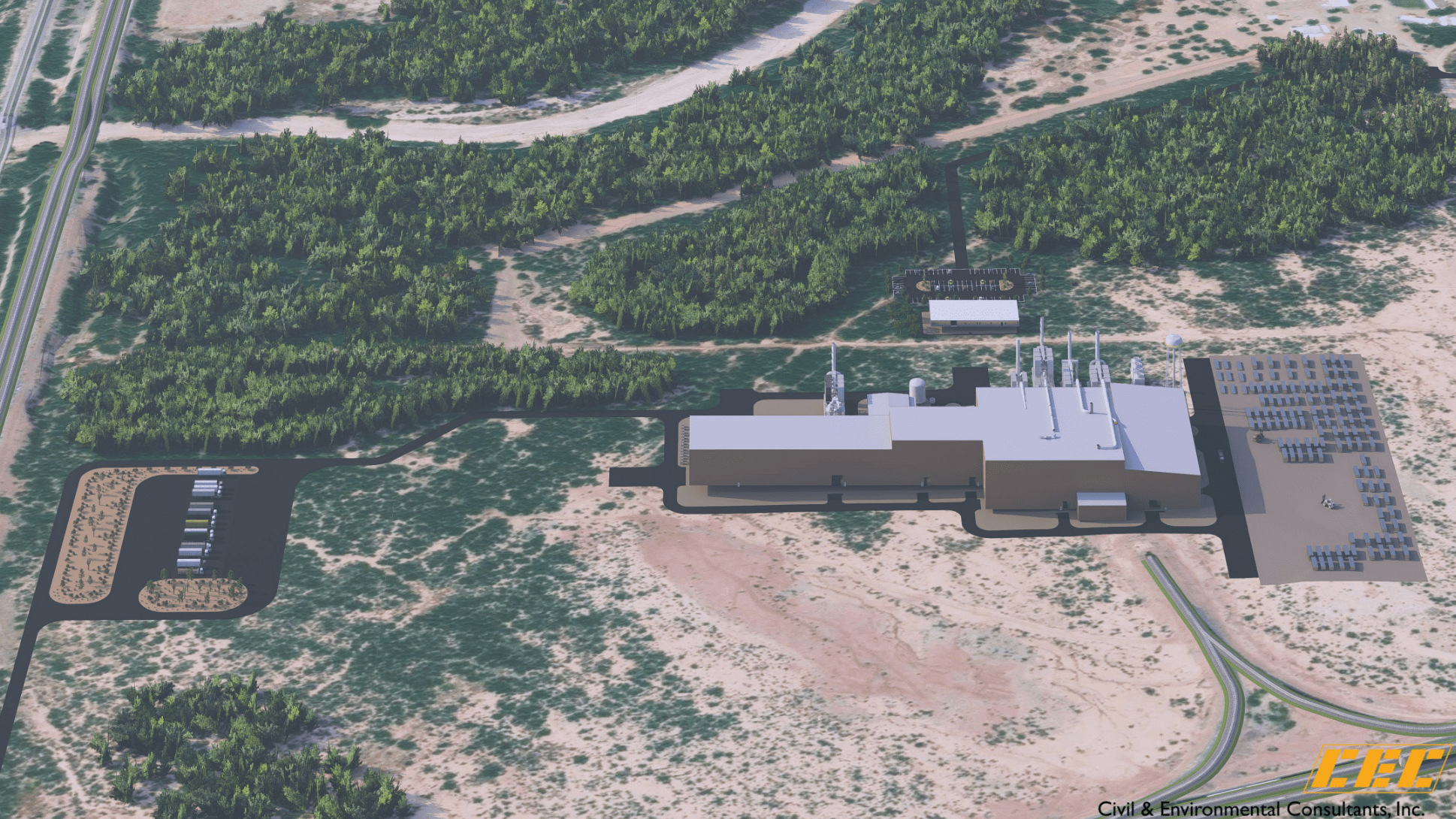
Ashlyn Bloom is a local beef rancher and co-founder of Health Over Wealth Benson, a nonprofit group that emerged from the local opposition to Aluminum Dynamics. Bloom looked at Benson’s yearly water usage to calculate the impact that Aluminum Dynamics’ water request would have on the town. She said that the 388 gallons per minute would nearly double the city’s daily water usage.
In footage of a July 14 meeting of Benson’s City Council shared with the Daily Yonder, Benson resident Micah Lee broke down the cooling towers’ overall water usage, beyond what would be sourced from the city, in a public comment. Based on the cooling towers’ total capacity for water, he calculated that the Aluminum Dynamics plant would use 4.6 times more water annually than the City of Benson used in 2024.
While Aluminum Dynamics has stated some of that water will be recirculated, Bloom said she’s worried about how the aluminum plant will affect already-scarce water resources in the Sonoran Desert.
“Part of the reason I love being out here is because I can have my cows and my sheep and everything. The land provides my resources,” said Bloom. “If we don’t have water, I don’t know if we could be a place that gets our water trucked in.”
Arizona is in the midst of a drought that began in the 1990s, and Cochise County, where Benson is located, has spent the majority of 2025 thus far with either an Exceptional or Extreme Drought designation, the two most severe drought levels.
In 2024, the overpumping of groundwater in Cochise County prompted the Arizona Department of Water Resources to declare an Active Management Area to curb large corporations’ ability to draw water from the Willcox Basin without limit. Though Benson lies within the neighboring San Pedro watershed, some water experts are worried the overpumping problem could repeat itself with the construction of the Aluminum Dynamics development.
“They’re going to be putting unnecessary stress on the San Pedro watershed,” said Valerisa Gaddy, Navajo (Diné), Community Conservation Director at the nonprofit Watershed Management Group, which is based in Tucson. Gaddy has her Ph.D. in environmental science and microbiology with a focus on southern Arizona. She said there are currently “no sufficient safeguards” in place from the state to protect the San Pedro watershed.
“We need to start looking at water as not just a resource we can use, but as being an entity, and that comes from my own upbringing coming from the Navajo Nation,” Gaddy said. “[We] look at water as more of a holistic approach, as opposed to something that we can tap into and just use for our consumption.
This story is funded by readers like you.
Our nonprofit newsroom provides award-winning climate coverage free of charge and advertising. We rely on donations from readers like you to keep going. Please donate now to support our work.
Donate NowKhambholja said water usage was a rallying point for the anti-Project Blue activists in Tucson to understand and support Benson residents’ struggle against the aluminum plant.
“In the Sonoran Desert, water is life. Clean water is life, and we cannot survive without it,” she said. Though she sees striking similarities between the Project Blue development and the aluminum plant in terms of water usage, Khambholja said the solidarity between the two communities goes beyond water alone.
“Within all of these fights, there’s this common thread of these billion-dollar companies coming to our communities, taking what they want and leaving us to pick up the pieces,” she said.
Transparency Issues
In Benson, as in Tucson, residents are frustrated with the lack of transparency about the proposed development. Following Project Blue’s use of nondisclosure agreements in Pima County, both Tucson and Pima County governments are pursuing the adoption of stricter transparency rules tied to developers.
The city of Benson granted Aluminum Dynamics a conditional use permit during a November 6, 2024, Planning and Zoning Commission meeting. That permit authorized them to begin developing the land around the site, which Union Pacific Railroad confirmed to the Daily Yonder that it currently owns.
Bloom said Benson residents were not given adequate notice before the meeting last fall. A paper notice was posted on City Hall premises, and an announcement ran in the Sierra Vista Herald and Bisbee Observer, two subscription print and online newspapers based 30 and 50 miles south of Benson, respectively.
“That was a red flag to me,” Bloom said. “Why are you being so quiet about this? What do you not want us to find out?
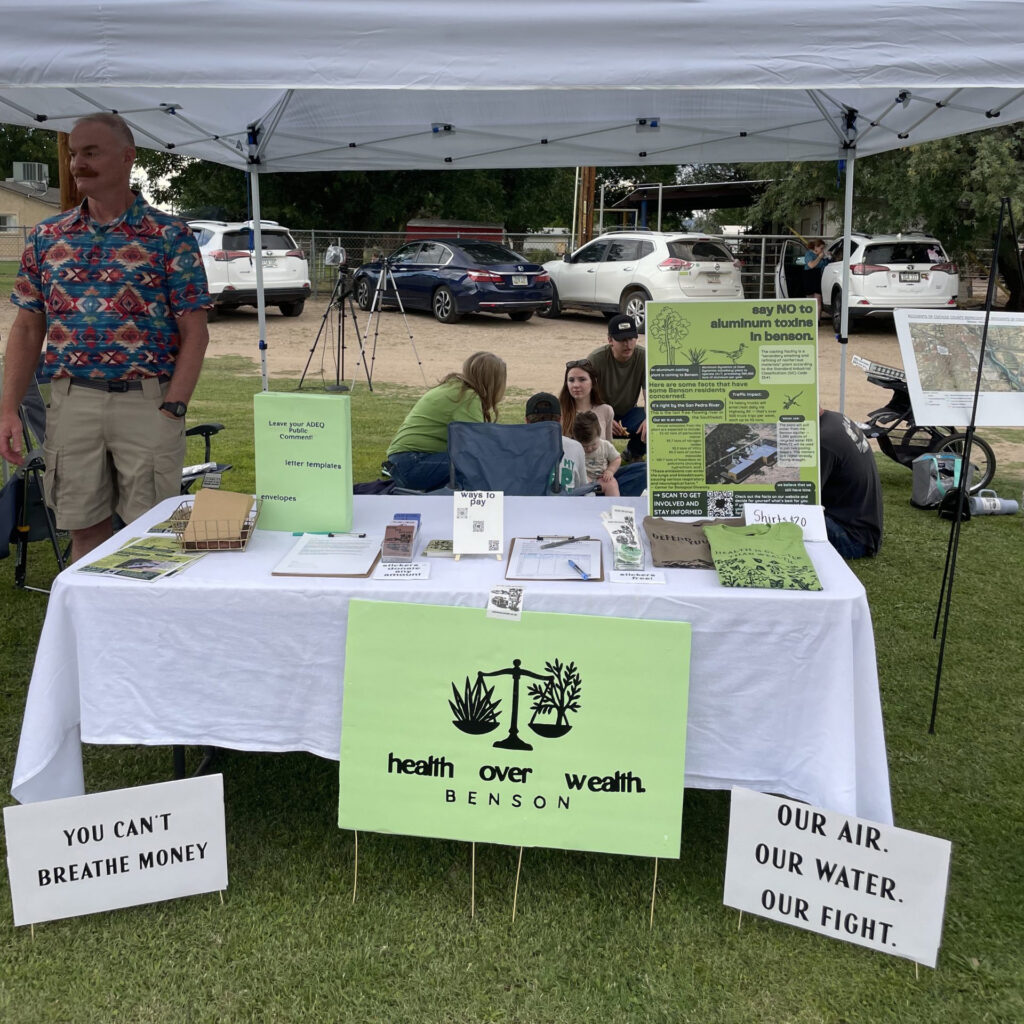
On August 29, 2025, Health Over Wealth Benson filed a lawsuit against Aluminum Dynamics and members of Benson’s Planning and Zoning Commission for what they claim was an illegally granted conditional use permit. Their argument alleges that the Planning and Zoning Commission failed to follow proper procedure under Arizona state law. Instead of issuing a conditional use permit for the site, the plaintiffs argue that the city should have issued a height variance, something which the Board of Adjustments typically oversees rather than the Planning and Zoning Commission.
“It just feels very shady the way that they went about it,” Bloom said, noting that before Aluminum Dynamics’ application in Benson, the company had filed a similar application with the neighboring community of Gila Bend, population 1,800. Gila Bend’s City Council voted down the request during a public meeting on July 9, 2024. Aluminum Dynamics has since filed a lawsuit against the City of Gila Bend for lost investment.
Aluminum Dynamics did not respond to the Daily Yonder’s questions about the plant’s proposed water usage, projected emissions, or Benson residents’ transparency concerns.
While members of Health Over Wealth Benson wait for a court date from Cochise County Superior Court, they are not letting up on their pressure against the city, county, and state. After holding public meetings in Benson over the summer as part of the air permitting process, ADEQ extended its public comment period by one month, ending acceptance of additional comments on September 16. Health Over Wealth Benson posted resources on its website to help members of the public craft submissions that meet ADEQ’s requirements for being fact-based and grounded in law.
In a statement to the Daily Yonder, ADEQ said it had received a total of 814 public comments on the draft permit during the comment period. The agency will now review the comments and release a responsiveness summary before submitting the proposed final permit to the EPA, which will then have a 45-day review period to make objections. If the EPA has no issues with the draft permit, ADEQ will then issue the final permit to Aluminum Dynamics. If the EPA does have objections, ADEQ will need to resolve them within 90 days before it can issue the final permit.
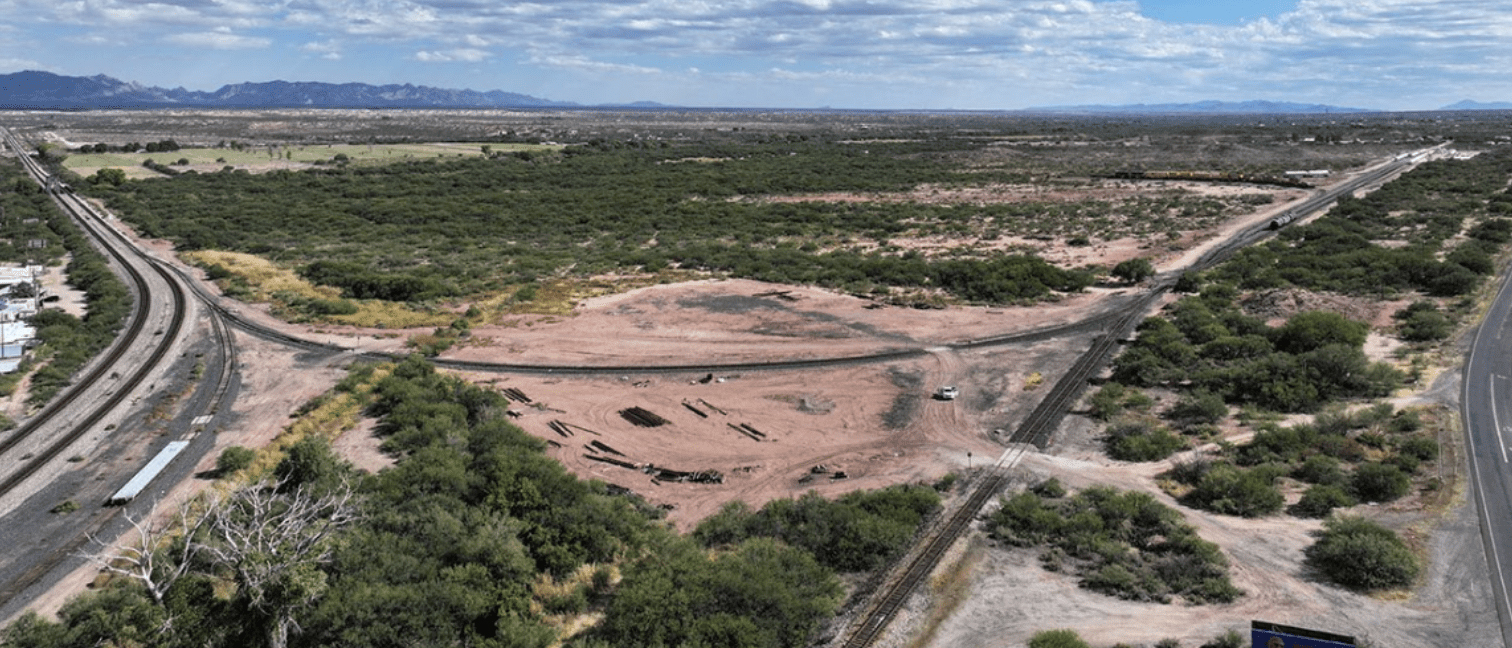
While the number of comments alone won’t influence ADEQ’s actions, the evaluation of the comments could prompt changes to the permit. ADEQ may change permit conditions based on comments “to ensure a permit is as protective as possible,” wrote ADEQ spokesperson Caroline Oppleman in a statement to the Daily Yonder.
During the comment period, Tucsonans involved in the fight against Project Blue saw a chance to lift up their counterparts’ work in Benson.
Julie Dittmer, a born and raised Tucsonan who works as an independent researcher in law and policy, submitted comments to ADEQ and Benson’s City Council in August expressing concerns around the transparency, public accountability, and long-term community impacts of the proposed aluminum plant.
“Questions have emerged around timing of hearings, adequacy of public process, and whether agencies are prioritizing corporate timelines over public oversight,” she wrote.
Chantelle Khambholja also submitted comments to ADEQ. An avid birder, she said that what’s playing out in Benson is a shared struggle for all who live in the region. Should the aluminum plant be built, Khambholja said she worries what could become of the San Pedro River ecosystem, which has long been a favorite spot of hers for spotting migratory birds, since millions make their way through the valley annually on their journey across the continent.
“These issues of extractive industries coming into communities like ours unite us beyond so many other things that would have otherwise potentially divided us,” Khambholja said. “They unite us across political boundaries. They unite us across socio-economic boundaries.”
This article first appeared on The Daily Yonder and is republished here under a Creative Commons Attribution-NoDerivatives 4.0 International License.
About This Story
Perhaps you noticed: This story, like all the news we publish, is free to read. That’s because Inside Climate News is a 501c3 nonprofit organization. We do not charge a subscription fee, lock our news behind a paywall, or clutter our website with ads. We make our news on climate and the environment freely available to you and anyone who wants it.
That’s not all. We also share our news for free with scores of other media organizations around the country. Many of them can’t afford to do environmental journalism of their own. We’ve built bureaus from coast to coast to report local stories, collaborate with local newsrooms and co-publish articles so that this vital work is shared as widely as possible.
Two of us launched ICN in 2007. Six years later we earned a Pulitzer Prize for National Reporting, and now we run the oldest and largest dedicated climate newsroom in the nation. We tell the story in all its complexity. We hold polluters accountable. We expose environmental injustice. We debunk misinformation. We scrutinize solutions and inspire action.
Donations from readers like you fund every aspect of what we do. If you don’t already, will you support our ongoing work, our reporting on the biggest crisis facing our planet, and help us reach even more readers in more places?
Please take a moment to make a tax-deductible donation. Every one of them makes a difference.
Thank you,

